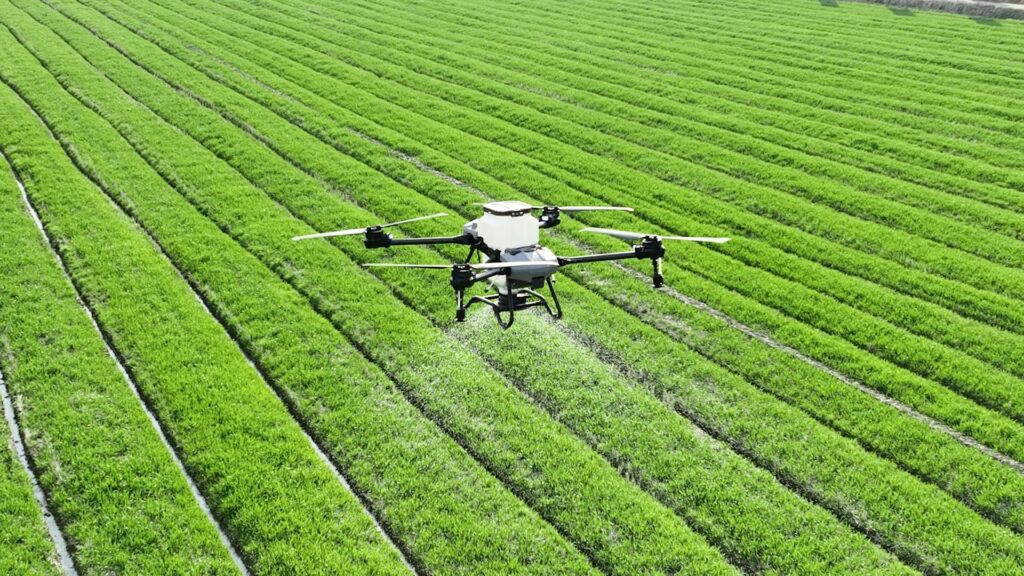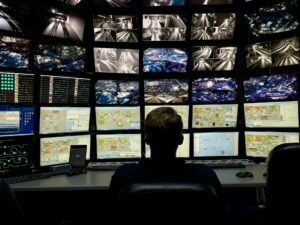Precision Agriculture: Drones, Sensors, and Artificial Intelligence (AI) Working Together to Provide Food for the World

Precision Agriculture: Drones, Sensors, and Artificial Intelligence (AI) Working Together to Provide Food for the World
The Necessity of More Intelligent Agricultural Practices
The demand for food on a global scale is increasing at an accelerated rate as a result of the ever-expanding population, urbanization, and changes in consumer habits. Although they have shown to be productive for centuries, conventional agricultural practices can result in inefficiencies such as the excessive use of water, fertilizers, and pesticides. In order to guarantee that all resources are used in a more effective manner, precision agriculture has arisen as a solution. It employs technology to enhance agricultural operations and ensure that resources are not wasted.
What Exactly Is Precision Agriculture?
The term “precision agriculture” refers to the use of modern technology, such as drones, sensors, artificial intelligence (AI), and data analytics, in order to observe crops, regulate soil conditions, and increase yields. Precision farming allows farmers to make choices based on data that is unique to certain plots, crops, or even individual plants, rather than treating whole fields in a similar manner.
Farming and the Part Played by Drones
Drones have become one of the most often seen instruments used in precision agriculture. By using high-resolution cameras and multispectral sensors, drones are able to swiftly scan across huge regions, delivering precise photographs of crop health, soil conditions, and irrigation demands. Farmers are able to discover issues early on, such insect infestations or nutrient deficits, before they become serious, thanks to this bird’s-eye perspective.
Sensors on the Ground for Data in Real Time
Ground-based sensors, as well as aerial surveillance, are essential components in the process of gathering real-time data. Farmers are able to have a better understanding of the precise circumstances that their crops must endure thanks to these sensors, which are capable of measuring soil moisture, nutrient levels, and temperature. This information makes it possible to provide irrigation and fertilizing exactly where they are required, which reduces waste to a minimum and makes efficiency as high as possible.
The Use of Artificial Intelligence in the Decision-Making Process
Artificial intelligence is capable of taking the enormous quantities of information that are collected by drones and sensors and converting it into insights that can be put into action. Machine learning algorithms have the ability to anticipate weather patterns, estimate agricultural yields, and even provide suggestions for the optimal periods for planting or harvesting crops. Farmers are able to make more effective plans and minimize their exposure to potential hazards as a result of this predictive capacity.
Irrigation Systems That Are Intelligent
One of the most significant difficulties facing the agricultural industry is the lack of water. Precision irrigation systems are controlled by artificial intelligence (AI) and sensor data, which allows them to distribute the precise quantity of water that crops demand. This results in cheaper costs, a decrease in water waste, and the guarantee that plants get a steady supply of hydration, which leads to improved yields.
Enhancement of Fertilizers and Pesticides
In addition to increasing expenses, the ecosystem is damaged by the over-application of pesticides and fertilizers. Precision farming technologies make it possible to apply focused applications, which means that just the necessary quantity is applied in the places that need it. This results in a reduction in chemical runoff, an improvement in soil health, and an overall increase in the sustainability of agricultural practices.
Management of Crops Based on Data
A unified dashboard is the result of data analytics systems integrating information from a variety of sources, including drones, satellites, sensors, and weather stations. Farmers have the ability to monitor the growth of their crops, make comparisons across various areas, and make adjustments to their strategy as they go. This comprehensive perspective enhances both the process of making decisions and the process of preparing for the future.
Robotics in Agriculture
Robotic harvesters and tractors that operate without human assistance are beginning to be included into the operations of contemporary farms. These devices are able to plant seeds with millimeter precision, weed fields without the need of pesticides, and harvest crops in an efficient manner, therefore minimizing manpower shortages and improving production.
Advantages for Farmers and Consumers
Precision agriculture not only boosts the productivity of farms, but it also provides advantages to consumers. A more stable food supply is guaranteed when yields are increased, and when the amount of chemicals used is decreased, the end result is produce that is healthier and safer. At the same time, farmers are able to reduce their expenditures on inputs and increase their profits.
Environmental Sustainability
The beneficial influence it has on the environment is among the most significant benefits of precision agriculture. These technologies contribute to the development of an agricultural system that is more sustainable and capable of satisfying future food needs without exhausting natural resources by lowering the amount of water that is used, decreasing chemical runoff, and enhancing soil health.
Difficulties That Confront Precision Agriculture
There are challenges that precision farming must overcome in order to succeed, including the expensive initial expenses, the restricted internet access in remote regions, and the need for technical skills, despite the promise that it holds. These technologies are being made more readily available to agricultural workers all throughout the globe via the collaborative efforts of governments, research institutes, and commercial enterprises.
The Future of Agricultural Production
The use of precision agriculture is predicted to become widespread by the year 2030, and farms will be driven by artificial intelligence, drones, and robots. Data-driven insights will be advantageous even for farmers that operate on a small scale as technology becomes more user-friendly and prices continue to fall. The end outcome will be more efficient and sustainable food production systems that are more robust.
The future of farming is represented by precision agriculture. Agriculture is becoming more intelligent, more efficient, and more sustainable with the help of drones that provide insights from above, sensors that offer soil data in real time, and artificial intelligence that drives predictive analytics. In addition to assisting in feeding the ever-increasing population of the globe, these advances will also serve to save the earth for years to come.




